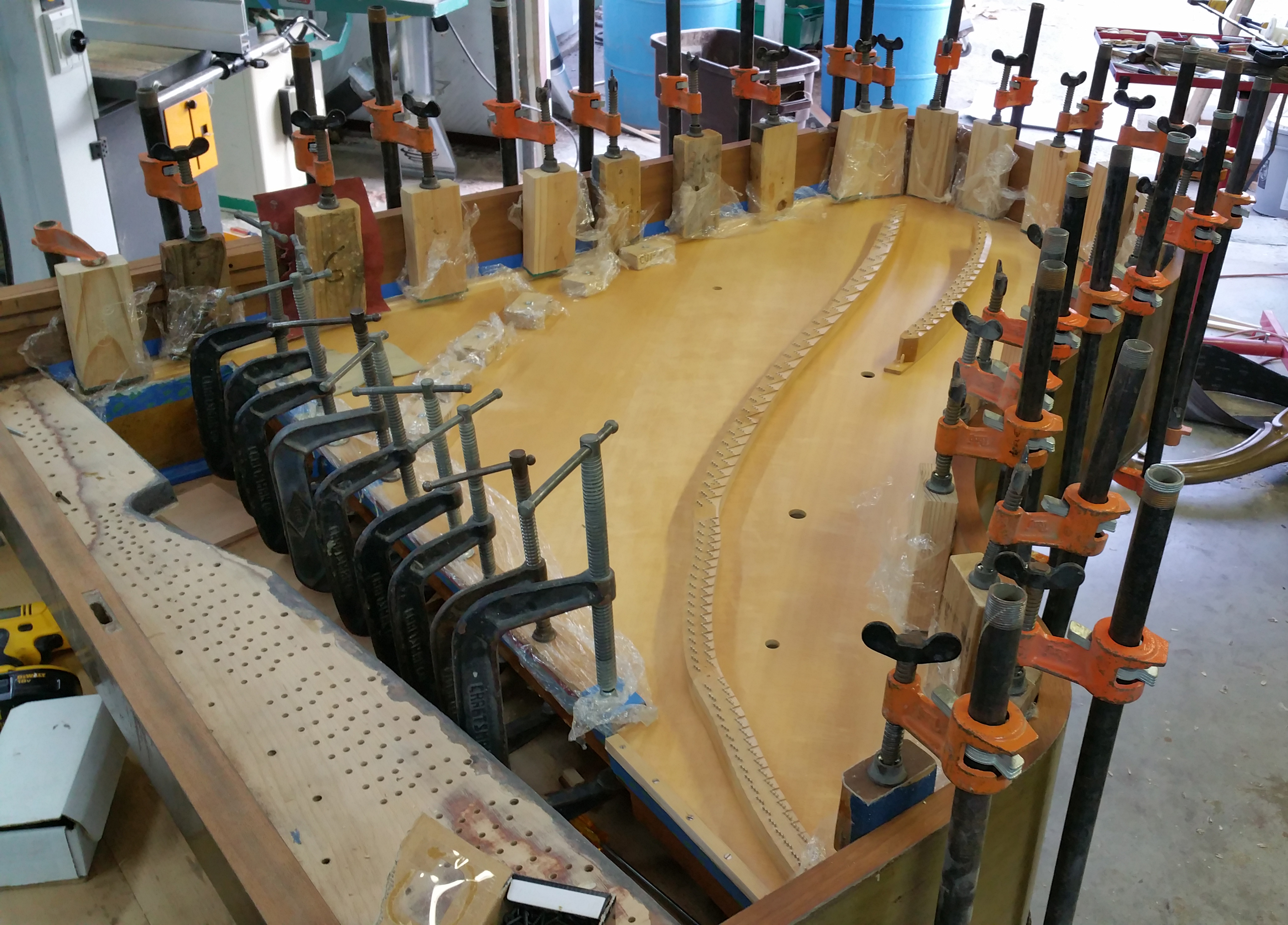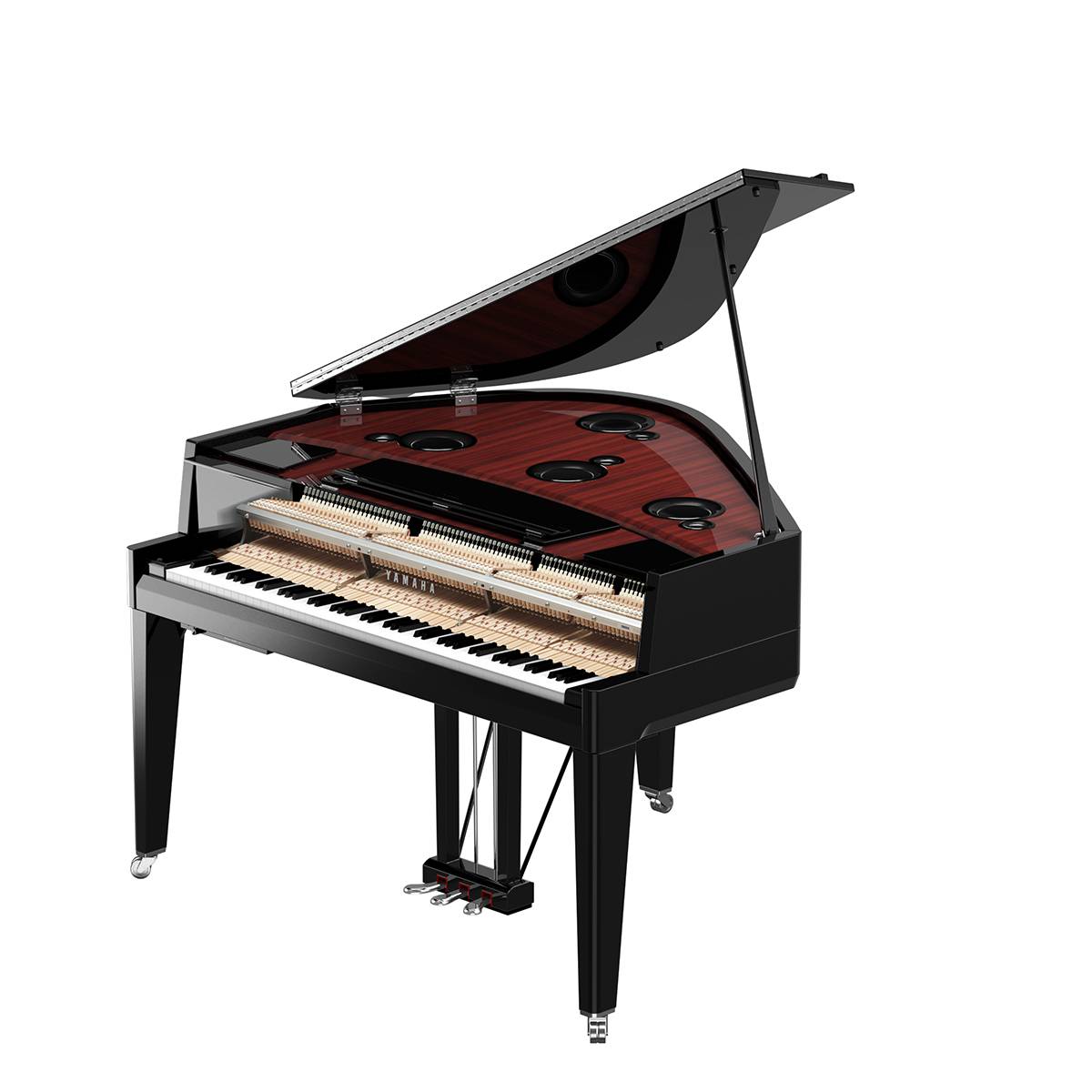


shows the mobility at the same point on the same soundboard with the strings and plate in place and the piano fully tuned. 21, the plate and strings were removed from the piano. The frequency and shape of soundboard modes are affected by the strings and the cast-iron plate. frequency for concert grand soundboard with no strings or plate (top), and with the piano fully assembled and tuned (bottom). 21 corresponds to a particular soundboard mode like those earlier shown in the Chladni patterns.įig. This plotted quantity is called mobility, and is the reciprocal of mechanical impedance. 21 presents modal information in another way: it is a graph giving the velocity of motion of the soundboard at one particular point (for a constant driving force), as a function of frequency.

With modern equipment it is possible to see an animated display of the modal motion of the soundboard on a TV-screen, a technique which will be described in more detail in the lecture by Klaus Wogram.įig. The tapping is repeated at a number of different preselected points on the soundboard, and after all the data has been taken, a computer analyzes it and identifies the modes (Suzuki 1986). An accelerometer attached to the soundboard responds to vibrations caused by the hammer and the force and acceleration signals are stored digitally. Using this method, the soundboard is tapped with a special hammer that is fitted with a force transducer. Today there is a better way, called modal analysis, to study the vibration of piano soundboards. In general, the thicker the soundboard, the louder the piano but the less the duration of its tone. Secondary factors include the characteristics of the rim or case to which the soundboard is attached. The modal frequencies are determined by many factors, the primary ones being the material, size and shape of the soundboard, its thickness and grain direction, and also the material, dimensions, and placement of its ribs.

Remember that the particles collect where the soundboard is moving least.įig. 18, 19, and 20, you can see how the soundboard moves at some of its other modes. A piano soundboard rapidly loses its effectiveness as a sound radiator at frequencies below that of the first mode, so notes below the first modal frequency usually do not have very much energy in the first partial. In this mode, it is the center of the soundboard that moves most violently the edges, where you see most of the particles, nearly stand still. The first mode of this soundboard occurred at 49 Hz. This produces a pattern called a Chladni figure, so named after the famous German physicist. As they dance, the particles gradually collect in those areas that are not moving at all or are moving with minimum velocity.
#Piano soundboard generator
Then the generator level is increased until the acceleration of the particles exceeds "1 g" (the acceleration of gravity, 9.8 m/s2) and the particles begin to dance on the soundboard. Then the vibration generator is turned on and tuned slowly until its frequency coincides approximately with that of a soundboard mode, as will be indicated by a noticeable increase in sound level from the soundboard. For such a test the procedure is the following: Before being vibrated the soundboard is covered uniformly all over its surface with a mixture of fine particles (in this case sand and "glitter"). The vibration generator, the circular object that can be seen to the left in the photos, has been connected mechanically to the soundboard at a point near its edge. 17 we see an experiment in which a concert grand piano soundboard has been vibrated at its first mode. The lowest frequency at which a soundboard can vibrate strongly is called the first mode. 17 - 20 show how a piano soundboard vibrates at some of its modes (resonances). Soundboards vibrate more readily at their modal or resonance frequencies than at other frequencies. Harold A Conklin Jr: Piano design factors How does a soundboard vibrate?


 0 kommentar(er)
0 kommentar(er)
